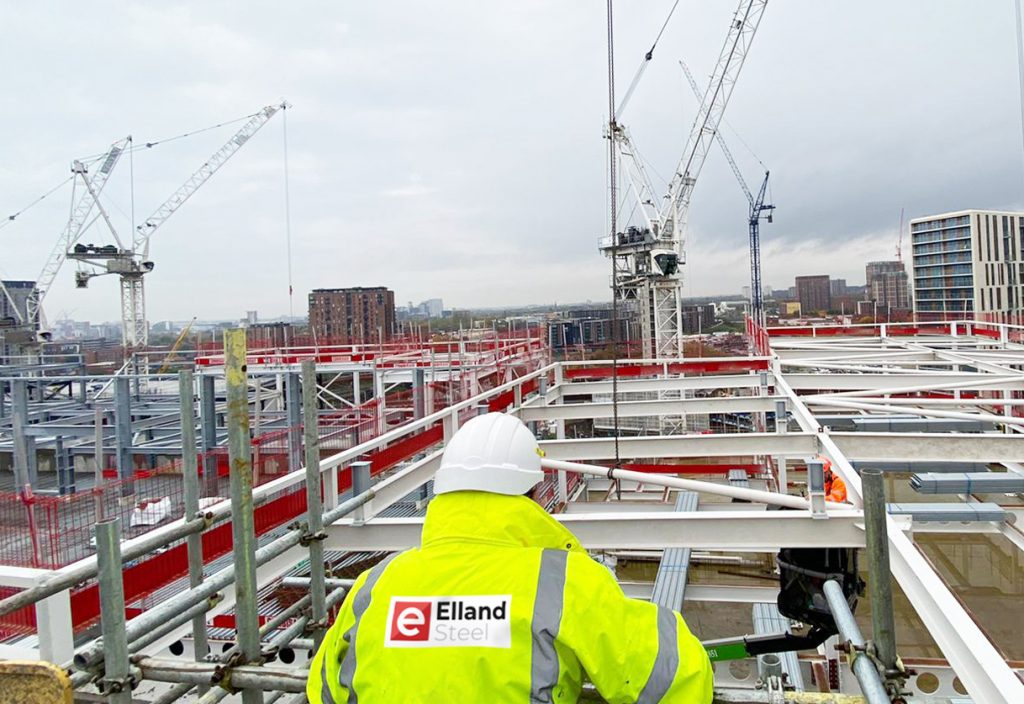The construction industry continued to face market challenges head on throughout September, but it’s now anticipated upheaval in the energy and fuel markets could create knock-on effects for businesses.
As gas price rises and panic buying at the fuel pumps dominated the national headlines, industry reports were focussed on the consistency of growth and recovery across the construction sector.
Both Glenigan and Barbour ABI’s industry analyses, published in September, reported on fluctuating figures but overall upwards trajectories. Overall the sector remains buoyant, they report.
Growth has been particularly strong in the industrial sector in recent months, with Barbour ABI reporting that £900m spend was awarded in August, with a particular focus on work on warehousing and logistics.
And this growth tallies with views on the causes behind labour shortages. Some business leaders are now saying the recruitment challenges are due to a rise in demand, rather than limited supply.
Many had feared that post-Brexit changes had reduced the number of people available to work, however recruiters now say it is instead due to high demand as the economy recovers. This bodes well for confidence in the construction industry and overall sector recovery.
However, there are some new challenges to remain mindful of, as hikes in gas prices and driver shortages which prompted panic buying of petrol and diesel are likely to have a ripple effect.
Huge rises in the wholesale price of gas – up by 250% since the beginning of the year – closed two fertilizer plants in September. This quickly had an impact on the food industry, which uses CO2, a by-product from the plants’ processes, in many of its production methods. Now other sectors will be braced to feel the effects too, with potential for knock-on price increases, since around 11% of the UK’s gas is needed for industrial or commercial purposes.
Meanwhile, prices at fuel pumps rose to their highest in eight years, impacting motorists and businesses alike. Contractors already working contingencies into their costings due to material shortages are now keeping a close eye on how this could impact their operations in the coming weeks and months.
While all businesses look ahead, continuing to carefully plan for new and ongoing projects, looking back at the last quarter’s figures will give some indication on the state of the play for the construction industry:
Recap – August’s industry update
In August we looked at how promising signs of recovery in the construction industry throughout Quarter One may have been short-lived. Quarter Two insights from both Glenigan and Barbour ABI suggested falls in contract awards and planning applications were slowing recovery from reaching pre-pandemic levels for all sectors. It was also clear that the ongoing challenges around shortages or rising prices of materials were impacting faster growth.
However, there were some sectors excelling, with output on infrastructure projects and repair and maintenance works looking favourable, as government departments invested tens of millions in transport and health.
Snapshot – September’s industry update
Barbour ABI has reported consistent levels of output during August, in its most recent monthly Snap Analysis. While allowing for the usual dips in activity and output that come with the school summer holidays, its analysis found overall levels of output were consistent in August.
This included the industrial sector’s growth with investment in warehousing, as above, and planning approval for a new £250m development too – one of nearly 3,000 projects approved in August alone.
Barbour ABI’s analysts predict growth across all sectors to remain stable or on the up for the remainder of 2021.
Similarly, the Glenigan Construction Review reported more positive signs of growth and recovery. In the three months to August, detailed planning approvals were up by 15% and underlying planning approvals were up by 8% when compared to 2019.
Looking back to the same period during pre-pandemic times offers a more balanced insight, since 2020’s output was so rocked by lockdowns and urgent infrastructure works.
Striking that balance between comparing output with 2020 versus 2019 remains important when viewing the construction industry’s latest figures, as some headlines could be misleading. For example, while major projects (over £100m in value) fell by 49% compared to 2020, suggesting significant decline, they are up by 53% when compared to 2019, indicating growth in the long-term.
Glenigan and Barbour ABI each share in-depth but impartial data for contractors and clients to keep up-to-date on all construction sectors and UK regions news.
Staying up-to-date with the sector’s latest developments, opportunities or challenges is essential for good project planning and delivery. For further construction industry insights, sign up to our newsletter.

